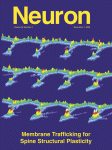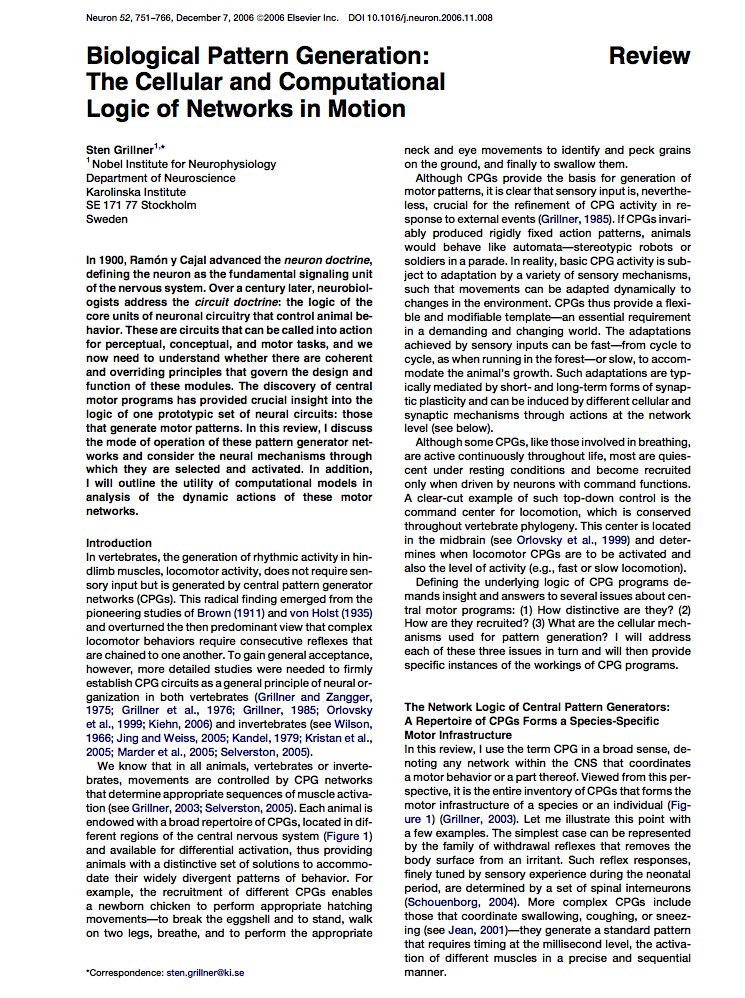Biological Pattern Generation: The Cellular and Computational Logic of Networks in Motion
07 December 2006
FENS News
07 December, 2006 in FENS News
 |
Biological Pattern Generation: The Cellular and Computational Logic of Networks in Motion Grillner S Neuron, Volume 52, Issue 5, p751–766, 7 December 2006 |
In 1900, Ramón y Cajal advanced the neuron doctrine, defining the neuron as the fundamental signaling unit of the nervous system. Over a century later, neurobiologists address the circuit doctrine: the logic of the core units of neuronal circuitry that control animal behavior. These are circuits that can be called into action for perceptual, conceptual, and motor tasks, and we now need to understand whether there are coherent and overriding principles that govern the design and function of these modules. The discovery of central motor programs has provided crucial insight into the logic of one prototypic set of neural circuits: those that generate motor patterns. In this review, I discuss the mode of operation of these pattern generator networks and consider the neural mechanisms through which they are selected and activated. In addition, I will outline the utility of computational models in analysis of the dynamic actions of these motor networks.
 Click here to access the online pdf version
Click here to access the online pdf version